We are melting
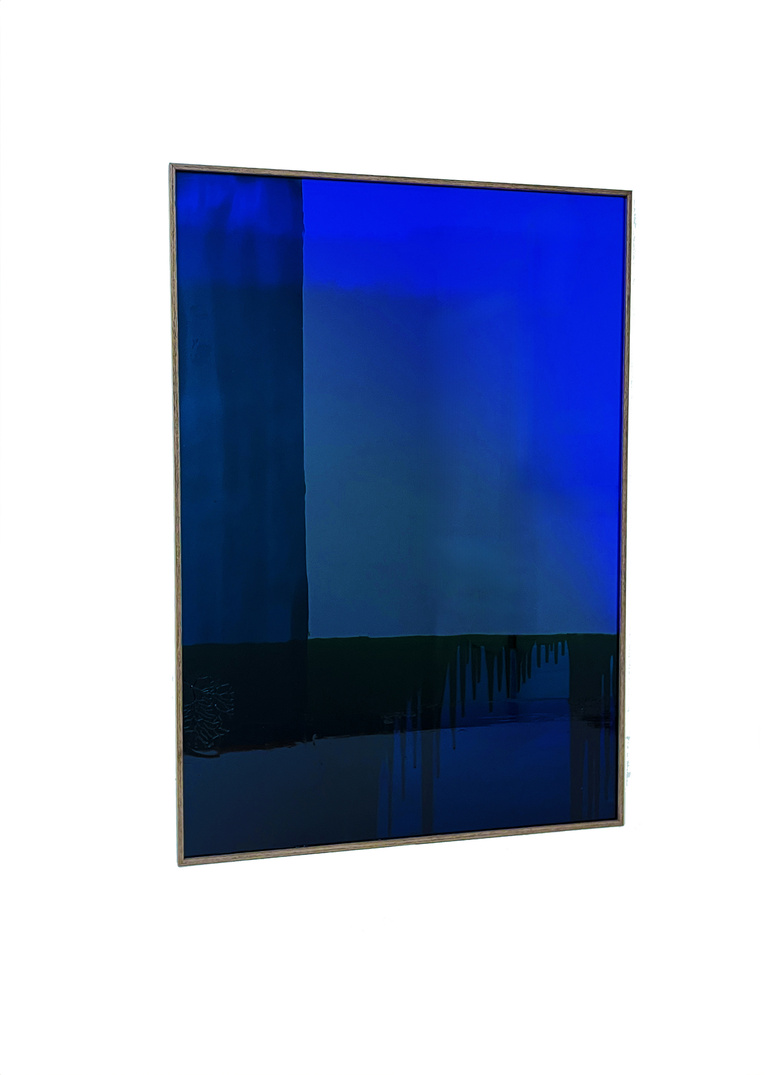
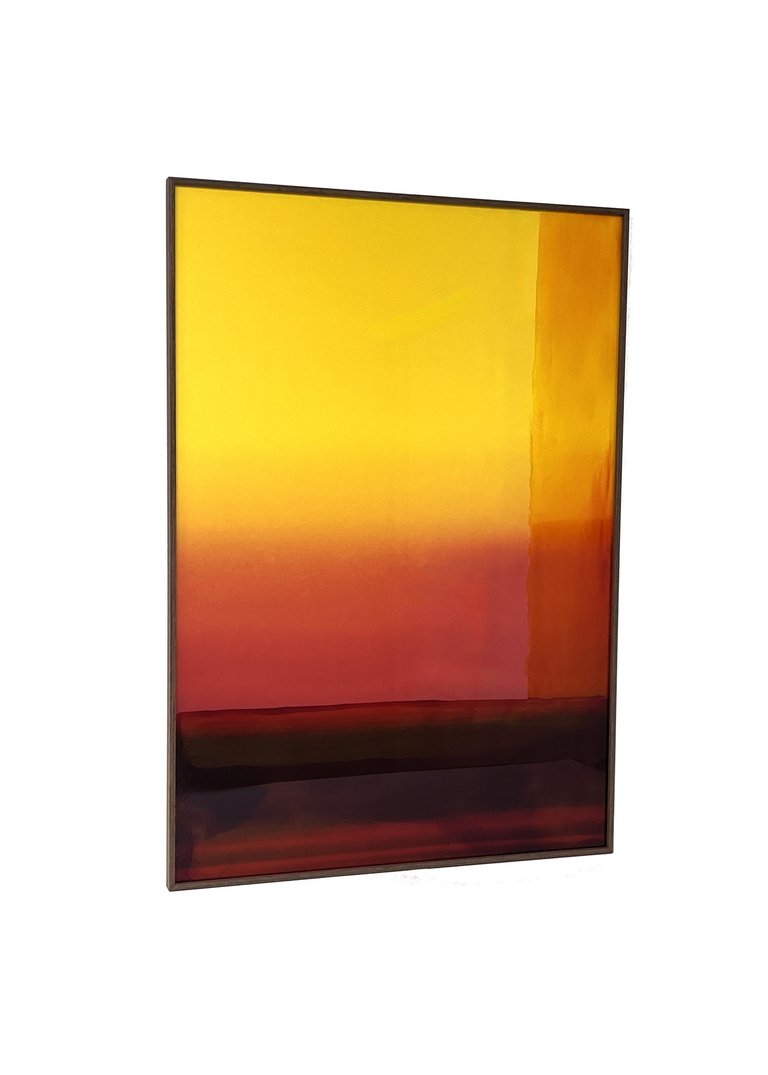
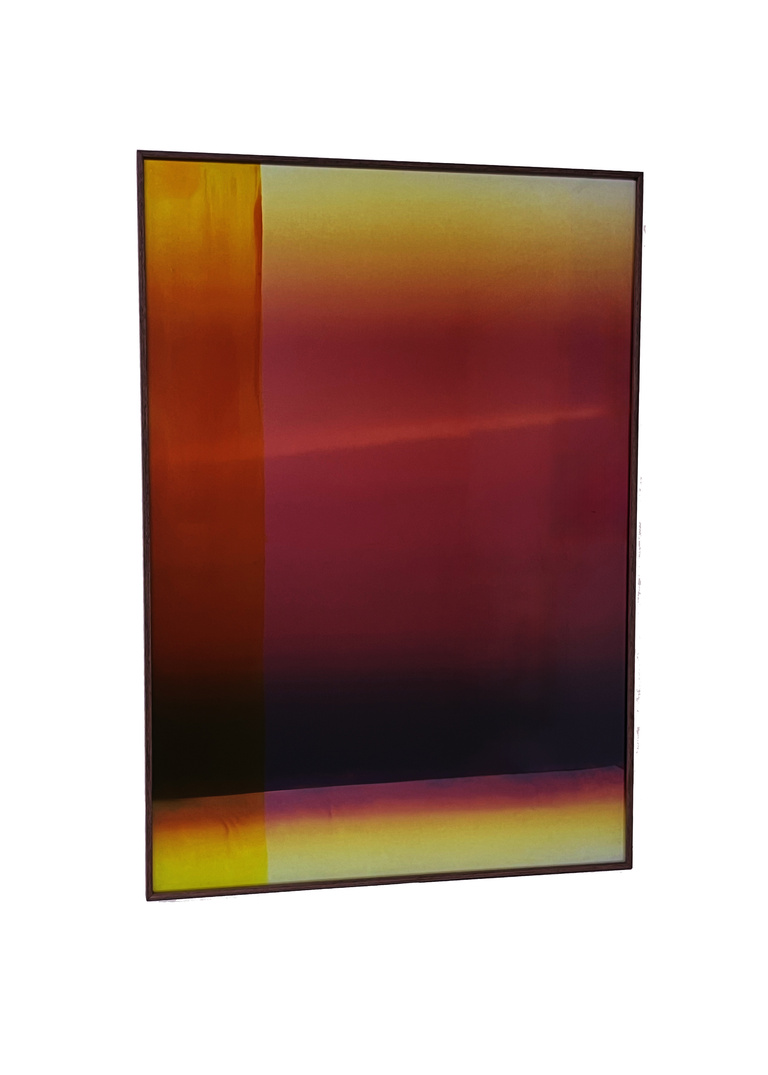
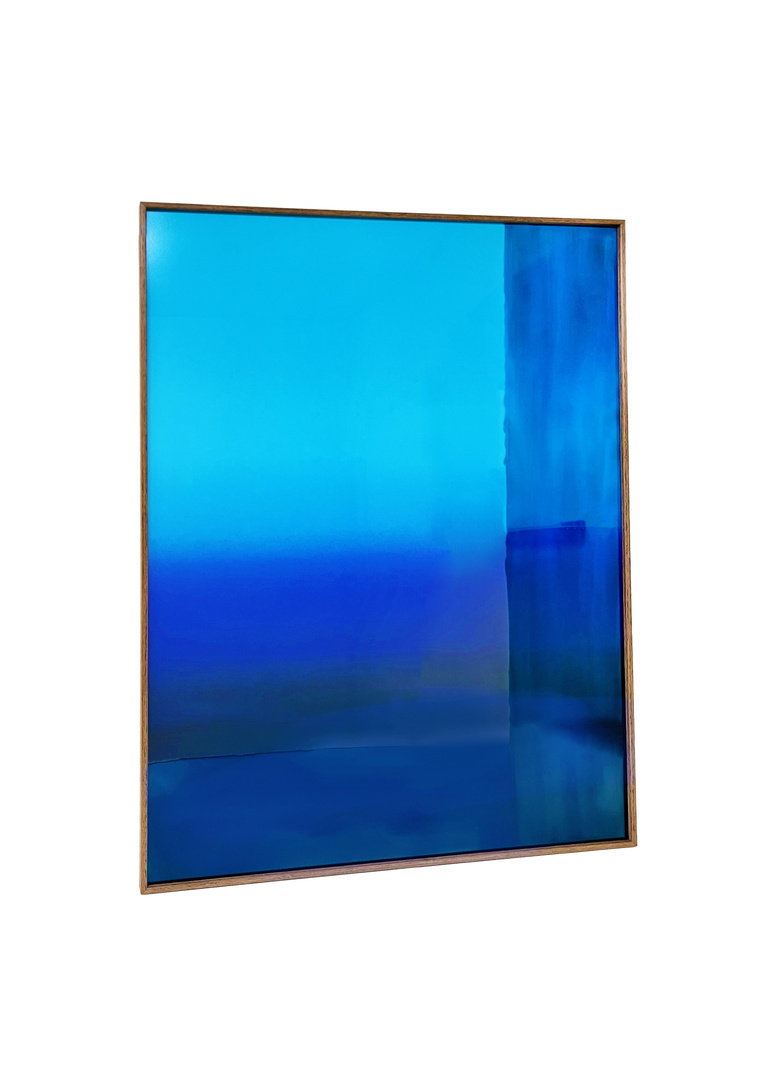
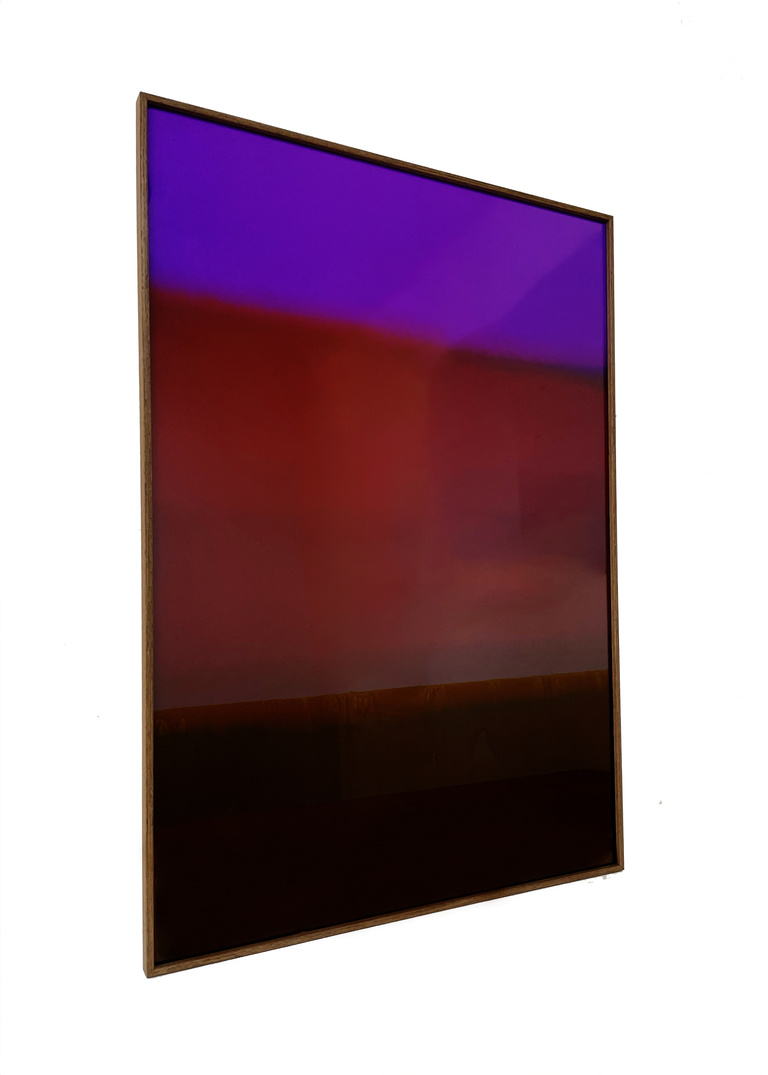
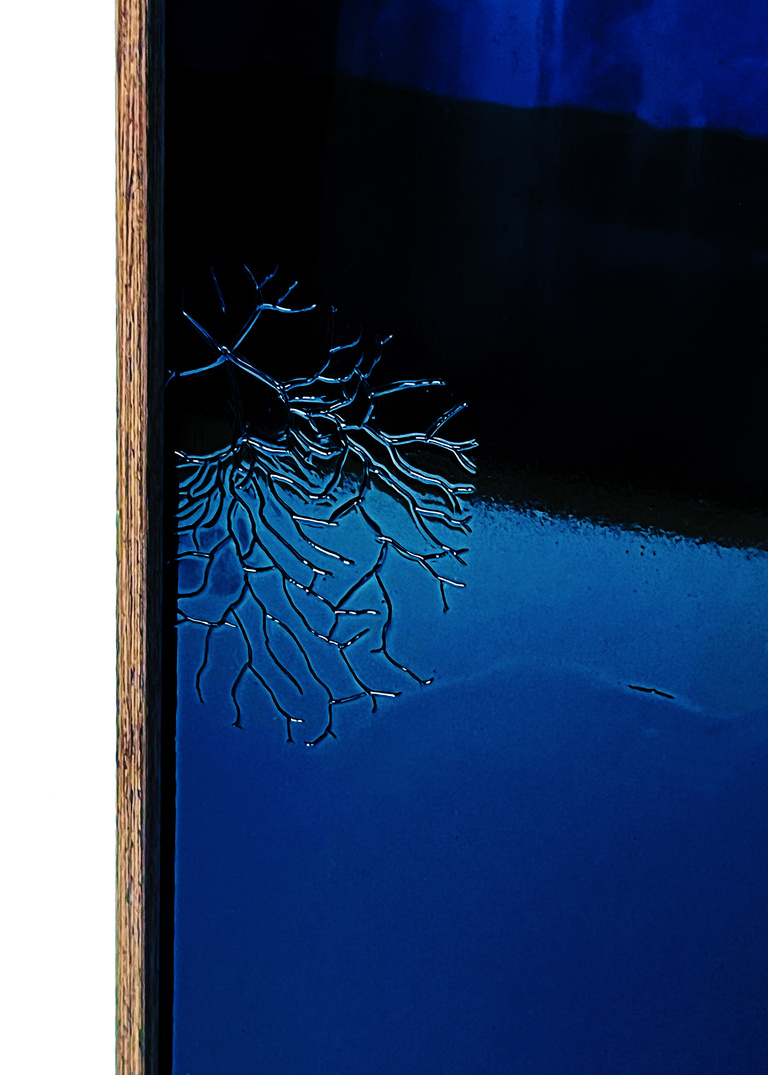
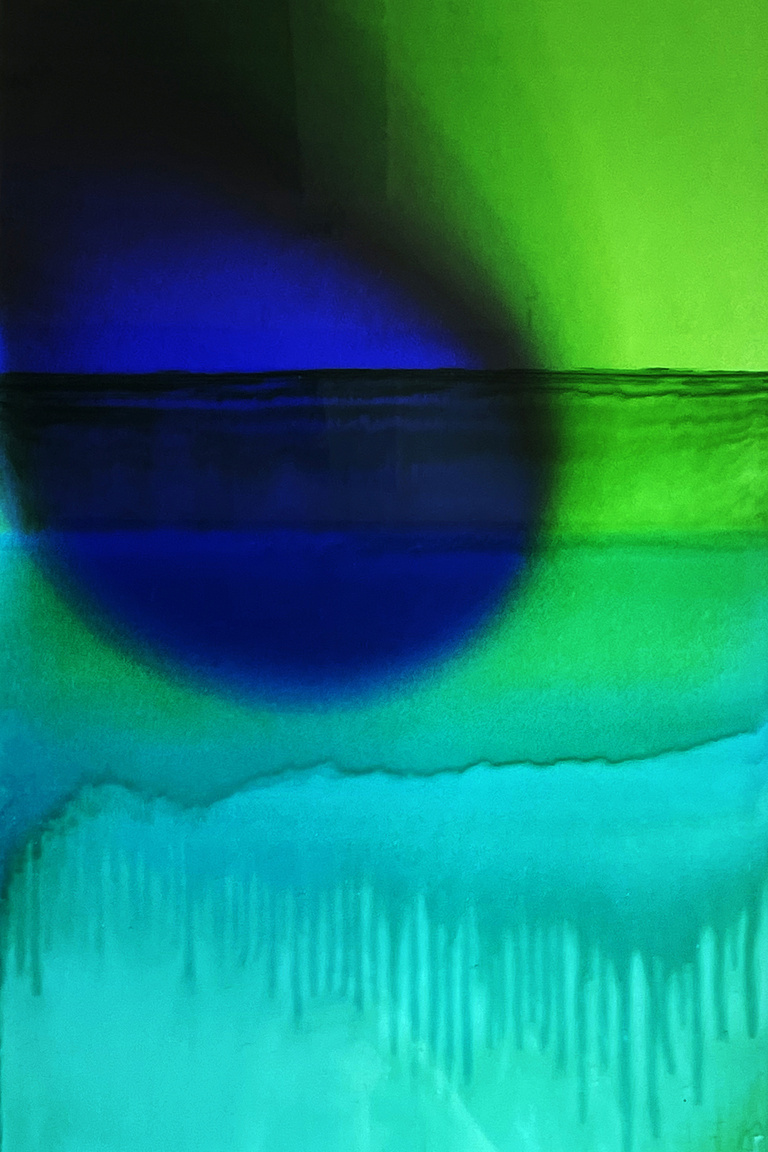
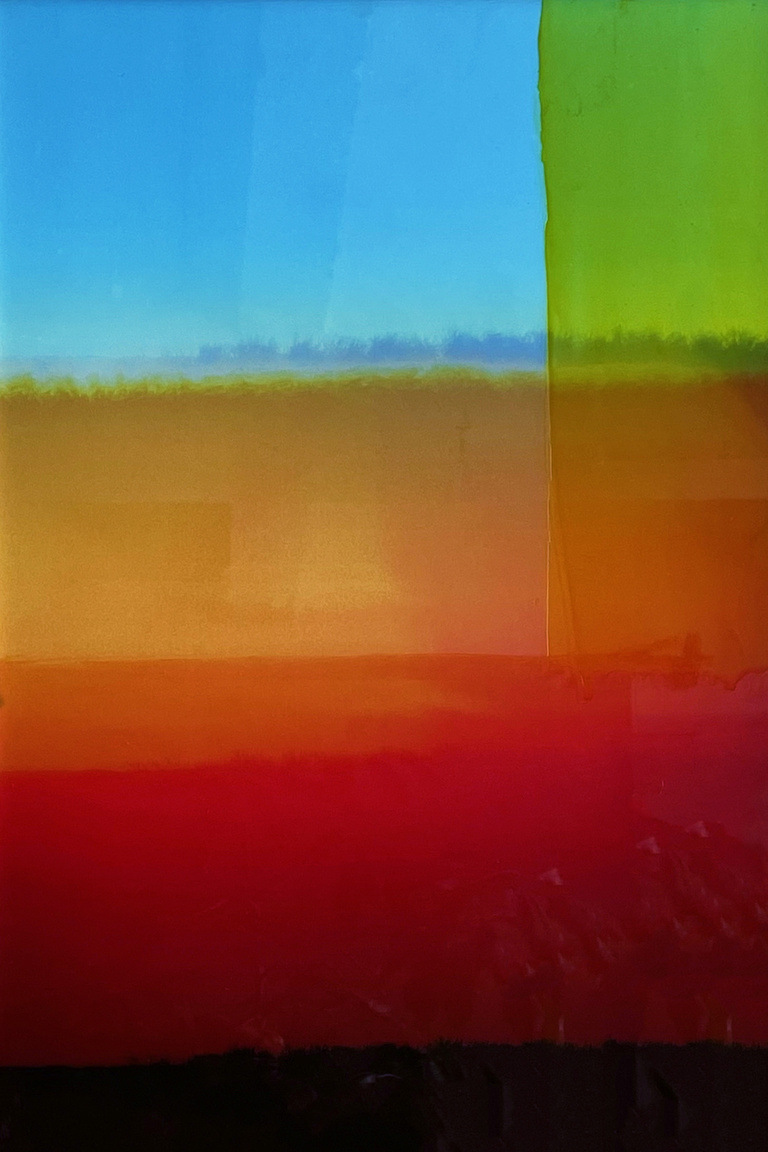
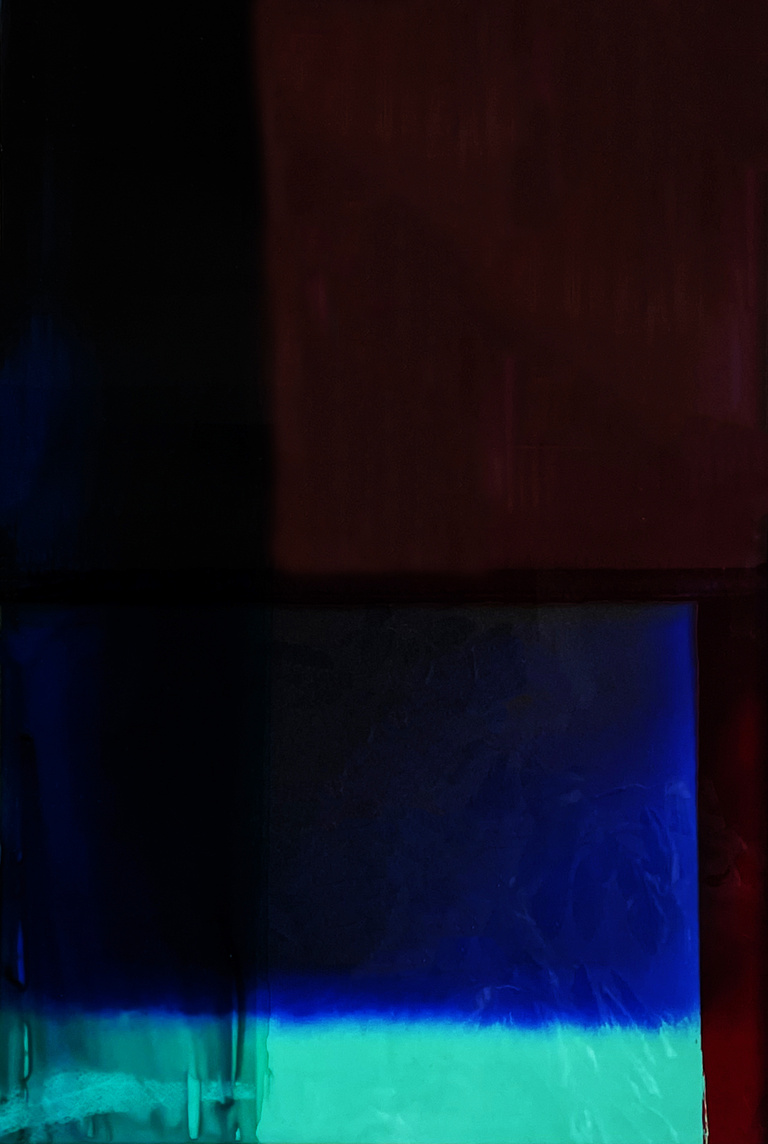
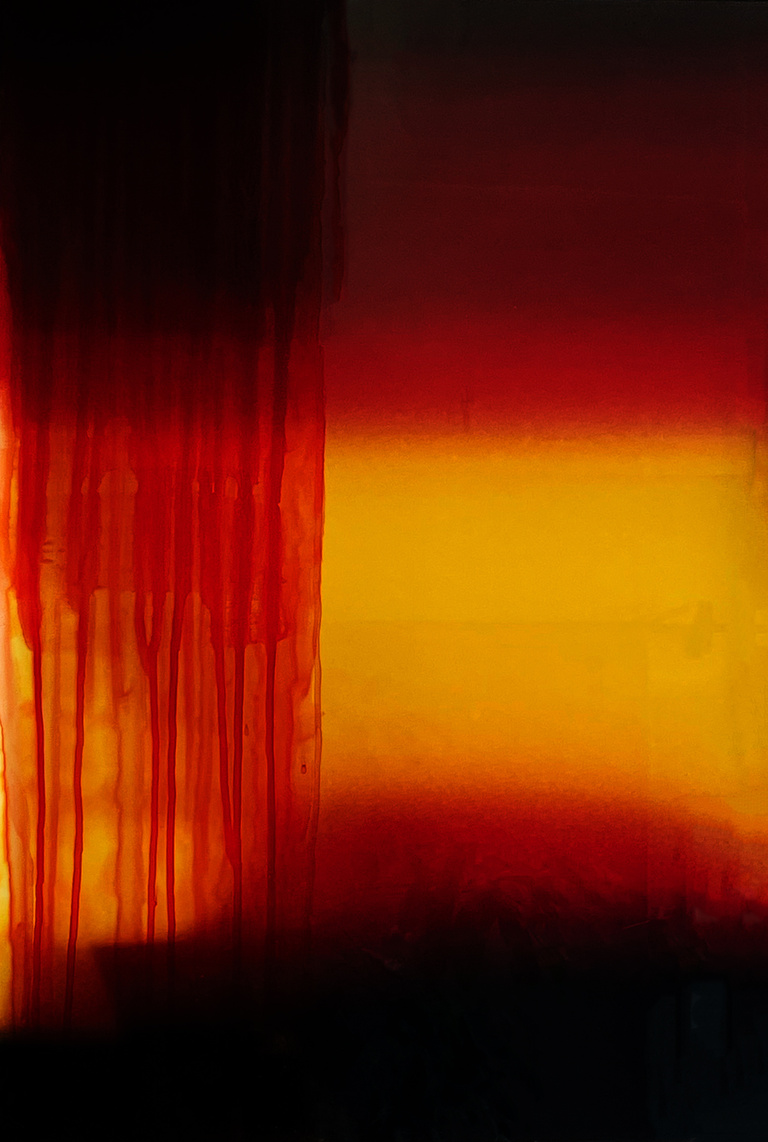
Info
We are melting
2023–2025
Photographs, stained glass painting on glass, unique works
With this series, Marguerite Bornhauser continues her exploration of color as a sensory language to reflect on climate change. We Are Melting is a body of work that expresses the gradual disintegration of our world, the transformation of landscapes, ice, and ecosystems extending to our own experience of the environment.
Climate change is often represented through thermal maps and color charts, a chromatic vocabulary that has become the dominant way of depicting the crisis. Marguerite Bornhauser has chosen to approach it through color, the warm tones of rising temperatures, the icy blues of glacial erosion creating abstract images in which change finds vivid expression, not in a scientific way but in a living form.
Using the beginning and the end of a roll of film, We Are Melting underscores the play of temporalities: from the first moments of appearance to dissolution, to disintegration. Once printed on paper, these images are combined with glass plates hand-painted by the artist, turning each piece into a unique hybrid, a blend of photography, stained glass, and painting. With cascades of warm colors or glacial blue gradients, Bornhauser brings to the surface in her compositions the physical states of a world in peril, traces of decomposition, change, disintegration.
In this play of transparencies and overlapping layers, color becomes a form of emotional language. It highlights, rather than describes, what change leaves in its wake: remnants, debris, suspended moments. We Are Melting is a sculptural, sensual experience of the present crisis - not a simple documentary representation of facts, but a creative, intimate memory of what we are living through. Through this work, Marguerite Bornhauser asserts herself as a colorist of the image, using color not just to see the world, but to reveal what we tend to ignore a reality that the title underscores with force: we are melting.
Marguerite Bornhauser by Simon Baker, Director of MEP (Maison Européene de la Photographie, Paris) 2021
"Plastic Colors", "Red Harvest", "When Black is Burned"; even the titles of the series by photographer Marguerite Bornhauser tell us immediately what concerns her; what animates her practice from start to finish. But colour, for Bornhauser, is not just the subject and focus of her work, but more often a way of perceiving, re-seeing and picturing the world. And hers is a world that, at first glance perhaps looks little different to our own: fragments of daily life, details, faces and places. But it is the nature of Bornhauser’s aesthetic response to the things she sees around her that mark her out as one of the most significant young photographers working in France today.
The history of photography is full of alchemists like Bornhauser, of whom perhaps the first among equals will always be William Eggleston, and the most influential, recently at least, Wolfgang Tillmans. Both of these precursors to Bornhauser’s practice identify and frame parts of the world around them, as only they see it, transforming these images into photographs of breath-taking poetry and beauty, often through an intensely personal regard for colour. For her first book-length project, Plastic Colours, Bornhauser sought out the acid, artificial tones associated with human-made objects and materials, bringing her audience up tight and close to their surfaces in a way that emphasised and heightened an already powerful spectrum of tones and hues. But as well as this initial process of selection, isolation and amplification, Bornhauser had already developed a practice of juxtaposition and sequencing that further intensified the chromatic potential of the individual images. Her use of diptychs on across the gutter of the page, in book form, and larger groups, when installed on the gallery wall, has since become fundamental to her practice.
In recent projects like Red Harvest (exhibited at MEP, Paris in 2019, and subsequently a book), and When Black is Burned, Bornhauser’s colours and tones become more subtle and organic, as a result, often of her focus on bodies and plants. But here too Bornhauser’s attention to the potential of juxtaposing one image with another brings a new sophistication to the (only apparent) simplicity of the individual compositions. In Red Harvest, for example, the title of which refers to a detective novel by Dashiell Hammett in which described details of colour play a key role, Bornhauser sets up a compelling visual game which relies at once on the similarities and differences between moments of colour, light and shadow from a diverse range of sources. Red leaps across the page from flower petals to a sun-drenched bikini; skeins of shadow unite draped fabrics and a pair of arms; elsewhere deep blues, bright oranges and burnt umbers bring together disparate and disassociated scenes of plant-life, human life and clothing.
The overall effect of Bornhauser’s practice, however, is to remind us of the way in which colour can echo, not only from one image to another, but from one place, or one moment in time, to another. Colour as subject-matter, or rather, colour as a means of producing photographic representations of the real world that surpass the sum of their parts, becomes a kind of psychological projection into or onto the everyday. In a sense this is why Bornhauser has so much in common with writers like Hammett, painters like Henri Matisse, or theorists like Gaston Bachelard, each of whom were sensitive to colour in their own unique and personal way. More in common, one could say, with pictorial or linguistic abstractions derived or drawn from colour, than with other photographers for whom colour is simply a technical issue to be resolved and exploited.
In her most recent work, moreover, Bornhauser has sought to engage not only with colour within the visual field but in the process of producing photographs as objects in the world. From sumptuous Cibachrome prints (for many, the holy grail of colour photographic reproduction) to new experiments with moving image and printing on fabrics, Bornhauser has taken the practice of re-showing the world around us as a brighter and more beautiful place to the next level in the terms by which her images occupy space, while never straying far from the unique truths at the heart of the way that only she sees things.